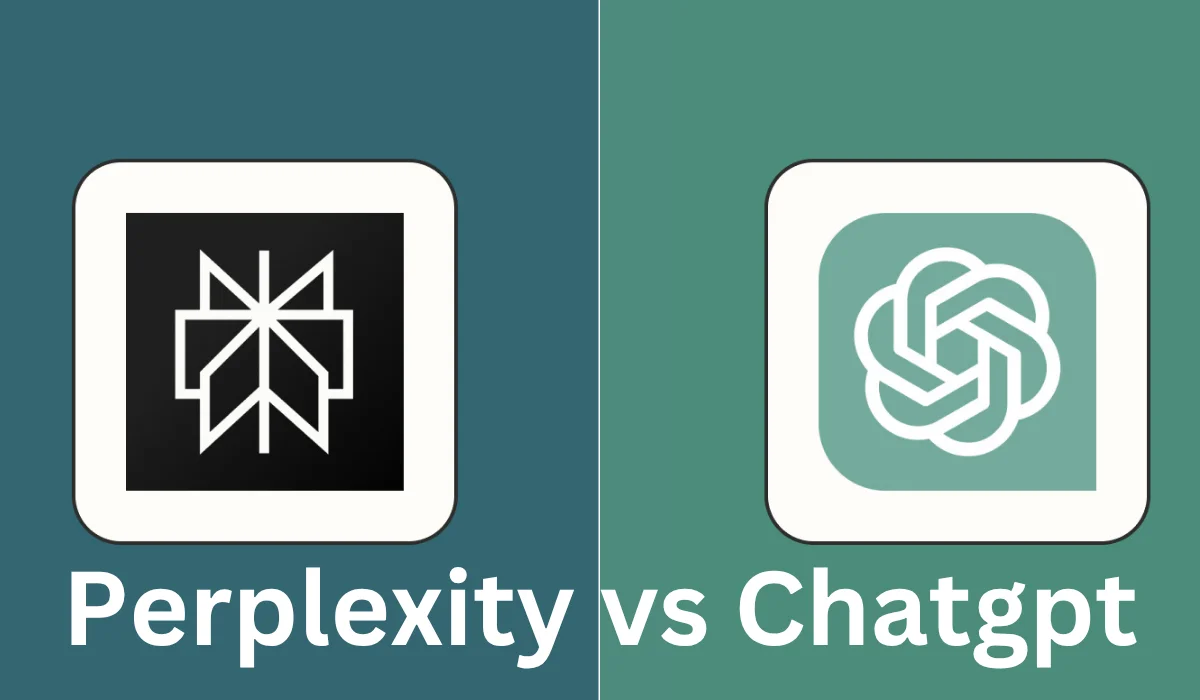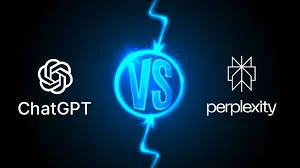Perplexity vs ChatGPT: Which AI Assistant Reigns Supreme?

In the ever-evolving world of artificial intelligence, two major players have emerged at the forefront of AI-powered assistants: Perplexity and ChatGPT. Both platforms promise smarter searches, faster answers, and enhanced productivity. But when it comes to everyday use, research, and AI-powered insight, which one truly reigns supreme?
This in-depth comparison breaks down Perplexity vs. ChatGPT, examining their strengths, weaknesses, and best use cases—all to help you choose the AI assistant that fits your needs .
.
What is Perplexity?
Perplexity is more than just a term in natural language processing (we’ll touch on that later); it’s also the name of a rising AI-powered search and answer engine. Perplexity AI combines elements of traditional search engines with conversational AI, allowing users to ask complex questions and receive citations-backed responses. Think of it as a cross between Google Search and an AI chatbot—but with the clarity and directness you’d expect from an academic assistant.
Built to deliver concise, accurate, and sourced information, Perplexity has gained popularity for its transparency and citation-first approach.
What is ChatGPT?
ChatGPT, developed by OpenAI, is a conversational AI model based on the GPT (Generative Pre-trained Transformer) architecture. With versions like GPT-4 and GPT-4-turbo powering the engine, ChatGPT is widely regarded as one of the most intelligent and versatile AI assistants available.
Unlike Perplexity, which leans into a search-plus-summarize model, ChatGPT operates as a pure conversational tool. You can ask it to write code, create content, brainstorm ideas, summarize documents, or even role-play characters—the breadth is astounding.
Comparing Features: ChatGPT vs. Perplexity
1. User Interface and Experience
Perplexity boasts a minimalistic, search-engine-like interface. You ask a question, and it answers—with sources displayed clearly, often linking to scholarly articles, websites, or news sources. For users who prefer transparency and accuracy, Perplexity wins points for citing its references right in the response.
ChatGPT, meanwhile, offers a richer, more dynamic interface. Especially with the pro version, users can customize chat experiences, browse the web (in supported versions), and interact with a memory-equipped assistant. It feels more like chatting with a digital collaborator than querying a database.
Winner: Tie—Perplexity for clarity, ChatGPT for flexibility.
2. Accuracy and Sourcing
One of Perplexity’s standout features is its commitment to verifiable answers. It minimizes hallucinations—a common issue with AI models—by pulling real-time data and citing it. For research, fact-checking, and quick verification, Perplexity is highly dependable.
ChatGPT, particularly GPT-4-turbo, is accurate most of the time, but it may not always provide sources unless asked. While it’s capable of citing, its responses are often more creative and less grounded in source material unless explicitly prompted.
Winner: Perplexity—especially for research-heavy tasks.
3. Creativity and Content Generation
This is where ChatGPT shines. Whether you need a poem, marketing copy, a startup idea, or a Python script, ChatGPT can generate impressive, original content in seconds. It can also role-play, iterate on ideas, and adapt its tone to suit your preferences.
Perplexity, on the other hand, is not designed for creativity. It focuses on delivering accurate, source-backed responses. Asking it to write a fictional story or create a brand slogan will usually return a functional, but dry, result—if at all.
Winner: ChatGPT—by a wide margin.
4. Real-Time Data and Updates
As of mid-2025, both Perplexity and ChatGPT (with browsing enabled) can access real-time data. However, Perplexity has a more search-centric infrastructure, often returning more current results—sometimes even beating traditional search engines in speed and clarity.
While ChatGPT can browse the web in supported versions (Pro users with web browsing enabled), it does so more conservatively and occasionally omits direct citations unless prompted.
Winner: Perplexity, for consistently up-to-date information.
5. Understanding the Role of “Perplexity” in NLP
Here’s a fun fact: the term perplexity in natural language processing refers to a metric used to evaluate how well a language model predicts a sample. Lower perplexity means better predictive performance. While this isn’t directly related to Perplexity AI, the naming is no coincidence.
A lower perplexity score in a language model implies greater fluency and coherence—something both Perplexity and ChatGPT aim to achieve in different ways. Where Perplexity minimizes perplexity by referencing external sources, ChatGPT does so via deep internal training on vast datasets.
Use Case Scenarios: Which Should You Use?
-
For Academic Research:
Choose Perplexity—its powerful citation engine is specifically designed for scholarly rigor, delivering answers backed by credible sources such as academic papers, news articles, and trusted websites. This makes it an ideal tool for students, researchers, and professionals who need verifiable information and reliable references at their fingertips. -
For Creative Projects or Content Writing:
Go with ChatGPT—it’s unmatched in generating original content, whether you’re crafting blog posts, social media captions, ad copy, fictional stories, or even technical documentation. Its ability to understand context, adapt tone, and produce creative, human-like text makes it an invaluable tool for writers, marketers, and creators alike. -
For Coding Help:
ChatGPT is better equipped to write, debug, and explain code—especially in its Pro versions, which offer advanced capabilities like code interpretation, error tracing, and even an IDE-like environment. With features such as syntax highlighting, context-aware code completion, and the ability to analyze multi-file projects, ChatGPT functions not just as a coding assistant but as a virtual pair programmer. Whether you’re building a web app, automating tasks with Python, or troubleshooting complex bugs, ChatGPT provides step-by-step explanations and optimized solutions tailored to your project. -
For News and Quick Facts
Perplexity often returns faster, more up-to-date answers thanks to its real-time data retrieval system, which continuously scans the web for the latest information. Unlike traditional search engines that may rank outdated content or large language models that rely on static training data, Perplexity pulls directly from current sources like news websites, academic journals, and trusted databases. This makes it especially valuable for users looking for breaking news, recent research, or time-sensitive insights. -
For Deep Conversations and Brainstorming:
ChatGPT excels at simulating natural dialogue, engaging users in meaningful, coherent conversations that feel intuitive and human-like. Its ability to assume various personas, adjust tone, and adapt to different conversational styles makes it an ideal tool for brainstorming, interviewing, role-playing, or exploring ideas from multiple viewpoints. Whether you’re looking for a creative partner, a debate opponent, or just a sounding board, ChatGPT offers diverse perspectives that enrich the user experience beyond simple question-and-answer interactions..
Final Verdict: Perplexity or ChatGPT?
The battle of Perplexity vs. ChatGPT ultimately comes down to purpose. If you want quick, accurate, and well-sourced information, Perplexity is your go-to. It thrives on reducing information noise and delivering clarity.
If you’re looking for depth, conversation, and creation, ChatGPT is the more versatile tool. It can act as your writing partner, code reviewer, tutor, or brainstorming buddy — sometimes all in a single chat.
In the end, neither assistant “reigns supreme” across all domains. But depending on what you need, one will certainly feel like the better choice.
So maybe the real answer isn’t Perplexity vs. ChatGPT, but rather, why not both?



